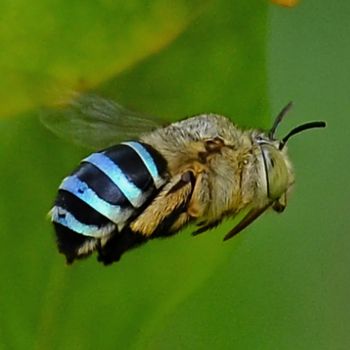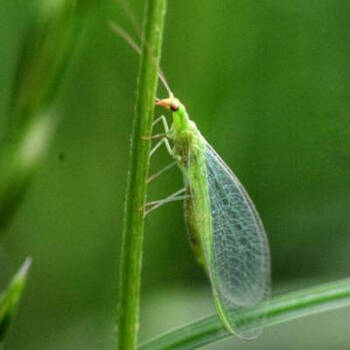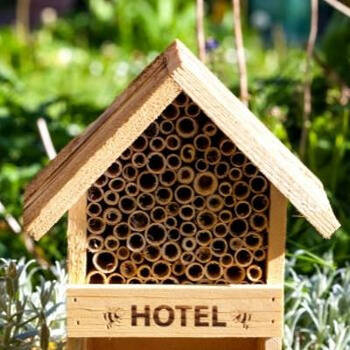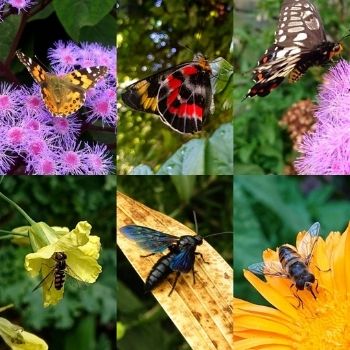You may think of flower pollination as quite a simple process, however the details are far more complex and there are a large and diverse range of pollinators responsible for successful plant pollination in your garden.
Flowers have evolved over many years to appeal to their preferred pollinator and attracting the right type of insect to complete the pollination process is important for their successful reproduction. While some flowers will attract multiple pollinators, most flowers have specific characteristics to appeal to their ideal insect.
Honeybees prefer flowers which are open throughout the day and are blue, purple and yellow in colour. European honeybees are attracted to flowers by their ability to see ultraviolet light and as a result they are much less sensitive to red coloured flowers. Bees prefer sweet scented flowers which provide them with a good source of both pollen and nectar. Bees are most active in warm calm weather.
.jpg)
Above left to right: Blue banded Bee (Amegilla). Native Bees (Lasioglossum). European Honey Bee.
Australian native bees and wasps prefer feeding on nectar from native plants, everlasting daisies, eucalyptus trees, callistemon, brachycome and grevillea species are their favourites. There are around 2000 species of native bees in Australia and most of them are solitary and do not form hives.
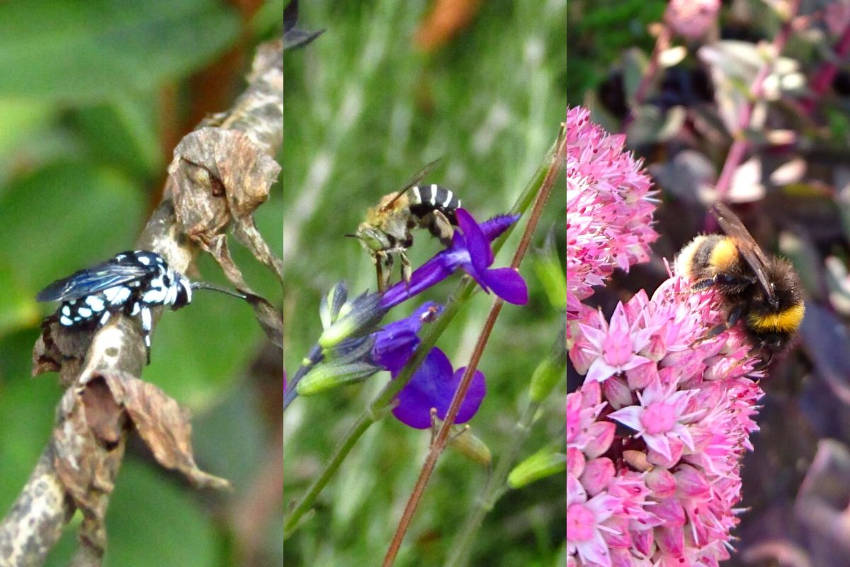
Above left to right: Chequered Cuckoo Bee (Thyreus). Blue Banded Bee (Amegilla). Bumble Bee (Bombus terrestris).
Butterflies are most attracted to boldly coloured bright flowers in red, orange, yellow, pink, and purple with a tubular shape. Butterflies are less inclined to frequent blue and green coloured flowers. They prefer flowers that are open during daylight hours with a weak scent and no pollen.
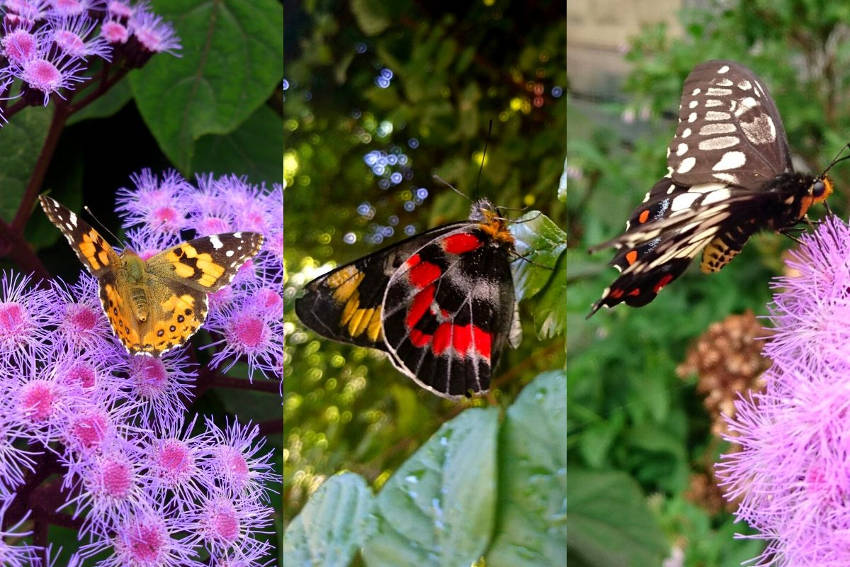
Above left to right: Painted Lady buttefly (Vanessa kershawi). Imperial Jezebel butterfly (Delias harpalyce). Dainty Swallowtail butterfly (Papillio anactus).
Most people do not think of flies as pollinators however with over 7000 native species in Australia they are one of the most common and successful garden pollinators and they come in many shapes and sizes. Flies are much more active than bees throughout the winter months and are responsible for a lot of successful pollination during those cooler months. They prefer faintly scented flowers which are open during daylight hours.
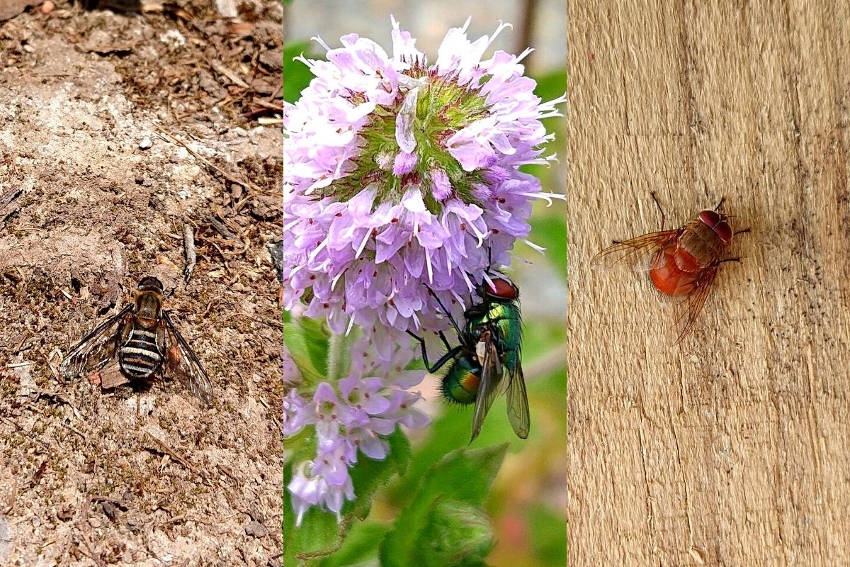
Above left to right: Bee fly. Green bottle fly. Reddish brown blowfly.
Drone flies and hoverflies can look a lot like bees or wasps and with similar colours and patterning they are easily mistaken. They prefer boldly coloured orange, yellow and white flowers that produce large amounts of nectar.
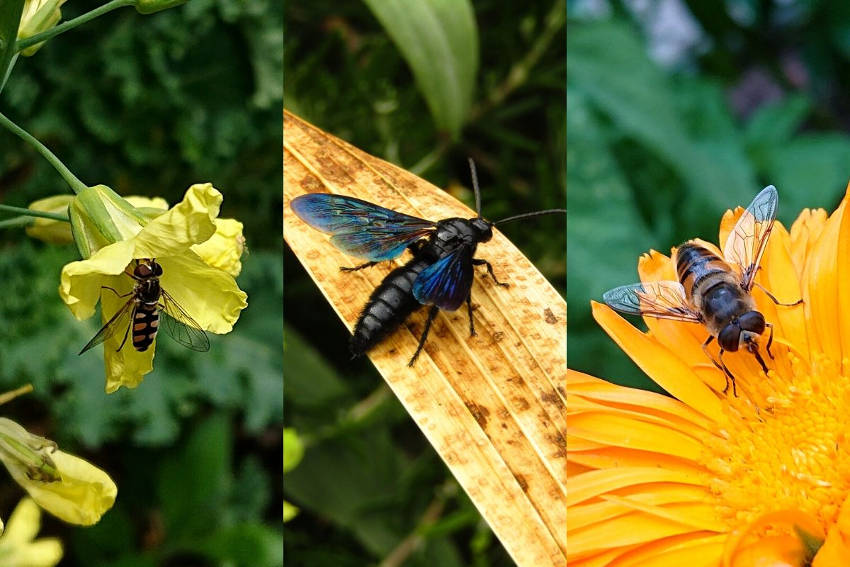
Above left to right: Hoverfly. Blue flower wasp. Drone fly.
Beetles including ladybird beetles are most attracted to green or white flowers, though they're not always great pollinators as they are limited by their flying capability they still have some role to play in flower pollination as they crawl or fly short distances between flowers carrying pollen.
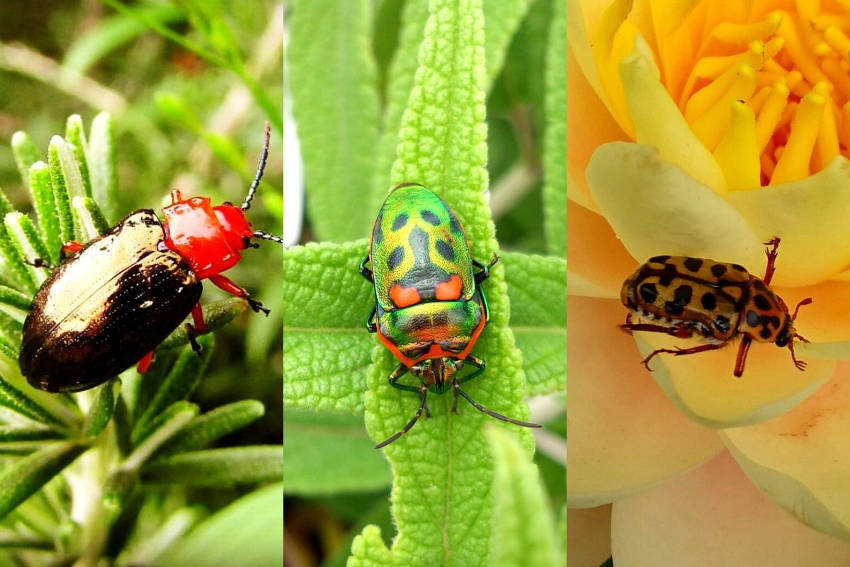
Above left to right: Blue and red flea beetle. Metallic jewel bug beetle. Leopard beetle.
Pollination does not stop once it gets dark, as soon as the sun goes down a whole new array of nocturnal pollinators come out in search of nectar. Moths tend to frequent small white or pale tubular shaped flowers with a strong scent (honeysuckle and jasmine are good examples). Flowers which appeal to moths open late in the afternoon or early evening. Usually these flowers are in clusters and produce large quantities of nectar.
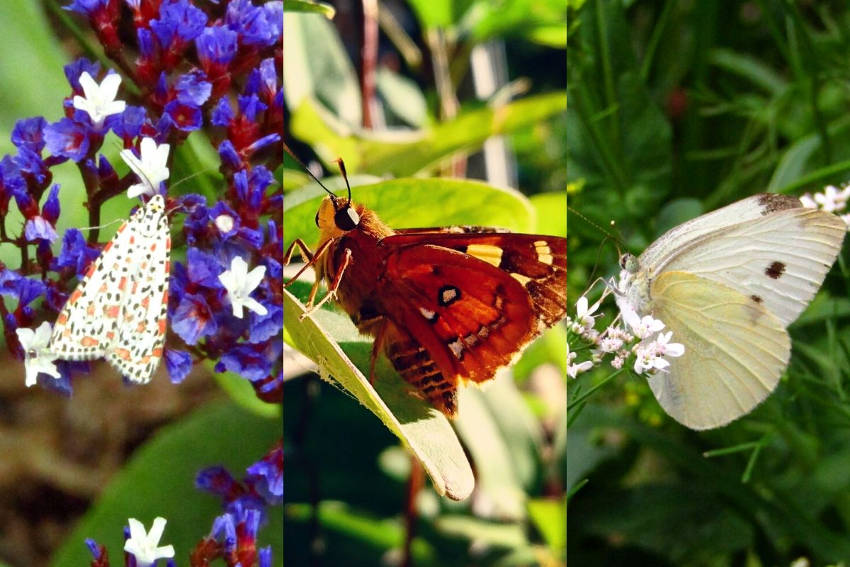
Above left to right: Heliotrope moth. Skipper. Cabbage moth.
Bats are also great nocturnal pollinators and are attracted to large white flowers or clusters of pale coloured flowers with a sweet scent. They like flowers which are high up in tree canopies and are open at night time. With over 70 species of bats in Australia they are a great pollinator of native plants. Bats feed on nectar and fruit and are responsible for carrying pollen long distances between trees and dispersing seeds over a large area, sometimes up to a 40km radius.
Vegetable and fruit crops are reliant on pollination to set fruit and whilst the most commonly thought about pollinator is the introduced European honey bee there are thousands of insects which are also wonderful pollinators and important for our ecosystem.
To encourage beneficial insects and pollinators to your garden choose flowers with differing characteristics which flower at different times of the year. Plant a few native species where possible, native grasses and well mulched garden beds make a great habitat for beneficial insects. To appeal to a large range of pollinators, having a diverse range of plants, flowers and colours will help improve the biodiversity in your garden.
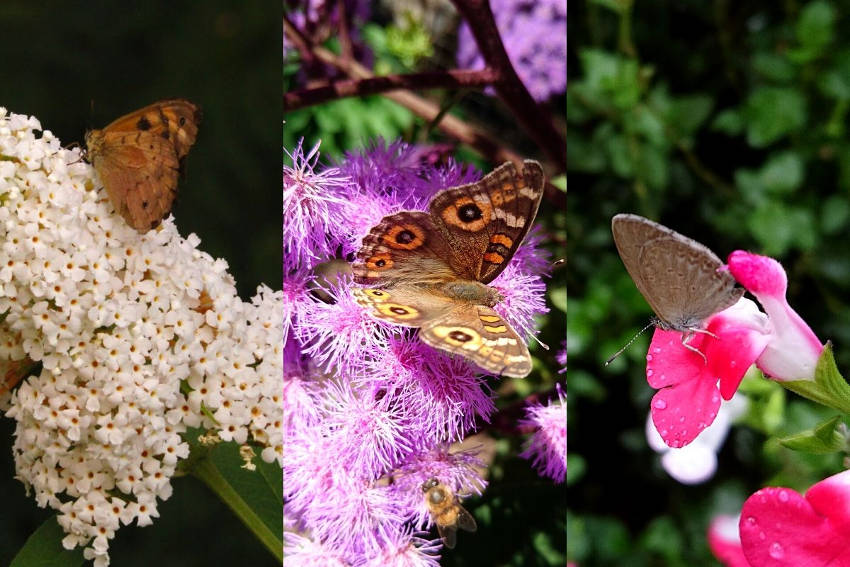
Above left to right: Common brown butterfly. Meadow argus butterfly. Common grass blue butterfly.


